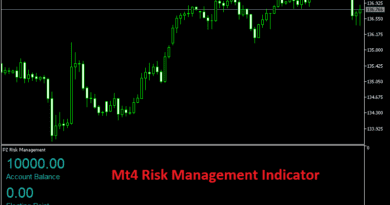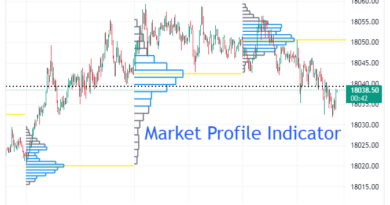Mastering High-Frequency Forex Trading: Strategies and Tips
Brief overview of high-frequency forex trading

High-frequency forex trading, often abbreviated as HFT, is a specialized trading strategy that involves executing a large number of trades in extremely short timeframes, typically milliseconds or microseconds. It is a subset of algorithmic trading, where computer algorithms make rapid trading decisions based on pre-defined parameters and real-time market data.
In HFT, traders seek to capitalize on small price fluctuations in currency pairs within fractions of a second. These traders use advanced technology, high-speed internet connections, and powerful computers to gain a competitive edge in the forex market. The primary goal of high-frequency trading is to generate profits from the market’s volatility and price inefficiencies, exploiting price differentials across various forex exchanges.
Key characteristics of high-frequency forex trading include:
- Speed: HFT algorithms operate at lightning-fast speeds, allowing for rapid execution of orders.
- High trading volumes: HFT strategies involve a high frequency of trades throughout the trading day.
- Liquidity provision: Some HFT firms act as market makers, providing liquidity by quoting bid and ask prices, facilitating smoother market operations.
- Data analysis: Advanced data analysis techniques, including machine learning and statistical arbitrage, are often used to make split-second trading decisions.
- Low latency: Minimizing latency (delay) in data transmission and order execution is crucial to HFT success.
High-frequency forex trading is not without its challenges, including regulatory scrutiny, the need for expensive technology infrastructure, and the constant risk of technical glitches. Nevertheless, for those with the expertise and resources, it can be a potentially lucrative trading strategy in the dynamic world of foreign exchange markets.
The purpose of this article is to provide readers with a comprehensive understanding of high-frequency forex trading, its significance in the forex market, and the fundamental strategies and considerations involved in this specialized trading approach. By reading this article, readers will gain insights into:
- Conceptual Clarity: This article aims to demystify high-frequency forex trading by providing a clear and concise explanation of what it entails, the key terminologies associated with it, and its evolution in the financial industry.
- Awareness of Advantages and Risks: It outlines the advantages and potential benefits of high-frequency forex trading, such as speed and efficiency, while also addressing the associated challenges and risks, including market volatility and regulatory compliance.
Definition and explanation of high-frequency trading
High-frequency trading (HFT) is a specialized and technologically advanced trading strategy within the financial markets, including the forex market. It involves the rapid execution of a large number of orders within extremely short timeframes, often measured in milliseconds (thousandths of a second) or microseconds (millionths of a second). HFT relies heavily on computer algorithms and cutting-edge technology to analyze market data and make lightning-fast trading decisions.
Here’s a more detailed explanation of high-frequency trading:
- Algorithmic Trading: HFT is a subset of algorithmic trading, where computer programs, known as algorithms, execute trading strategies automatically based on predefined rules and real-time market data. These algorithms are designed to identify and capitalize on tiny price discrepancies or inefficiencies in the market.
- Speed is Paramount: The primary distinguishing feature of HFT is its emphasis on speed. HFT firms invest heavily in reducing latency (delay) in all aspects of trading, including data transmission, order execution, and order routing. This allows them to gain a competitive advantage by executing trades faster than human traders can react.
- High Trading Frequencies: HFT strategies involve an incredibly high number of trades throughout the trading day. Traders using HFT systems may execute thousands or even millions of trades in a single day. These frequent trades are often executed in fractions of a second.
- Market Liquidity: Some HFT firms act as market makers, providing liquidity to the market by continuously quoting both bid and ask prices. They profit from the bid-ask spread, which is the difference between the buying (bid) and selling (ask) prices of a currency pair. By facilitating trades, they contribute to smoother market operations.
- Advanced Technology: HFT relies on powerful computers, high-speed internet connections, and specialized software that can process vast amounts of market data in real-time. These systems can quickly analyze market conditions, identify trading opportunities, and execute orders with precision.
- Arbitrage and Market-Making: Common HFT strategies include arbitrage and market-making. Arbitrage involves exploiting price differences between different forex exchanges or between related assets. Market-making involves continuously quoting buy and sell prices for a currency pair, profiting from the spread and providing liquidity to other traders.
- Risk Management: Due to the high-frequency nature of trading and the potential for rapid losses, risk management is a critical aspect of HFT. Traders using HFT systems implement strict risk controls, including stop-loss orders and position size limits.
- Regulatory Scrutiny: HFT has attracted regulatory attention and debate, as its rapid trading activities can affect market stability and fairness. Regulatory authorities have implemented rules and safeguards to monitor and regulate HFT activities to ensure market integrity.
In summary, high-frequency trading is a sophisticated and lightning-fast trading strategy that relies on advanced technology and algorithms to execute a large number of trades in fractions of a second. It is characterized by its emphasis on speed, high trading frequencies, and its potential to provide liquidity and capture small price discrepancies in the forex and financial markets.
Key concepts and terminologies
High-frequency trading (HFT) involves a specialized set of concepts and terminologies that are essential to understand for anyone interested in this trading strategy. Here are some key concepts and terminologies associated with HFT:
- Algorithmic Trading: The foundation of HFT, algorithmic trading refers to the use of computer algorithms to automate trading decisions. These algorithms are programmed to analyze market data and execute orders based on predefined rules.
- Latency: Latency is the time delay between the generation of a trading signal and the execution of the corresponding trade. In HFT, minimizing latency is critical to gain an advantage over competitors. Low-latency trading systems are designed to operate in microseconds or even nanoseconds.
- Market Data: Market data includes real-time information about asset prices, order book depth, trading volumes, and other relevant market information. HFT algorithms rely on accurate and up-to-date market data to make trading decisions.
- Tick: A tick is the smallest price increment that a currency pair can move. HFT strategies often aim to profit from tiny price changes, known as ticks or pips, and may involve trading at sub-tick levels.
- Order Types: HFT traders use various order types, including market orders (buy or sell at the current market price) and limit orders (buy or sell at a specific price or better). These orders are executed rapidly to capitalize on fleeting opportunities.
- Slippage: Slippage occurs when an order is executed at a price different from the expected price. In HFT, slippage can be minimized through low-latency execution and advanced order routing techniques.
- Market Maker: Some HFT firms act as market makers by continuously quoting buy and sell prices for currency pairs. They profit from the bid-ask spread and provide liquidity to other market participants.
- Arbitrage: Arbitrage is a strategy where HFT traders exploit price discrepancies between different markets or related assets. For example, they may buy a currency pair on one exchange and sell it at a slightly higher price on another exchange to profit from the price difference.
- Co-location: Co-location is the practice of physically locating HFT servers in close proximity to the exchange’s data center. This reduces the time it takes for data to travel between the trader’s server and the exchange, further reducing latency.
- Dark Pools: Dark pools are private, off-exchange trading venues where institutional traders, including some HFT firms, execute large block trades anonymously. Dark pools are often used to minimize market impact.
- Quantitative Models: HFT algorithms often employ quantitative models that use statistical analysis, machine learning, and historical data to predict market movements and identify profitable trading opportunities.
- Regulatory Oversight: HFT has faced regulatory scrutiny in various markets. Regulators have implemented rules and controls to ensure fairness, transparency, and market stability in the face of high-frequency trading activities.
- Risk Management: Effective risk management is crucial in HFT to limit potential losses. This includes setting stop-loss orders, position size limits, and monitoring for technical glitches or abnormal market conditions.
These key concepts and terminologies provide a foundation for understanding the intricacies of high-frequency trading. HFT is a complex and rapidly evolving field, and traders in this space must continually adapt their strategies to stay competitive in the fast-paced world of financial markets.
Historical context and evolution of high-frequency trading in forex
he evolution of high-frequency trading (HFT) in the forex market is a fascinating journey that has transformed the landscape of currency trading. Understanding its historical context helps to appreciate how technology and trading strategies have evolved over time:
- Early Electronic Trading (1970s-1990s):
- The forex market traditionally operated through phone calls and manual trading. It was dominated by banks, financial institutions, and large corporations.
- In the 1970s and 1980s, electronic trading platforms started emerging, allowing traders to access forex markets electronically.
- Electronic communication networks (ECNs) introduced in the 1990s facilitated faster order matching.
- Introduction of Algorithmic Trading (Late 1990s-2000s):
- The late 1990s saw the emergence of algorithmic trading, which laid the foundation for HFT. Traders began using computer algorithms to automate trading strategies.
- The growth of the internet and improved technology infrastructure enabled faster execution of trades.
- HFT Takes Off (Early 2000s):
- In the early 2000s, HFT started gaining prominence in the forex market. Firms specializing in high-frequency trading strategies began to emerge.
- The adoption of co-location, where HFT servers were placed in close proximity to exchange data centers, reduced latency and improved execution speed.
- Quantitative Models and Strategies (Mid-2000s):
- HFT firms started incorporating sophisticated quantitative models, machine learning, and statistical arbitrage strategies into their trading algorithms.
- Market-making and arbitrage became common HFT strategies, allowing firms to profit from bid-ask spreads and price discrepancies.
- Regulatory Scrutiny (Late 2000s-2010s):
- As HFT activity increased, regulatory bodies around the world began scrutinizing the industry.
- The “flash crash” of May 6, 2010, where the U.S. stock market experienced a rapid and severe drop followed by a quick recovery, raised concerns about HFT’s impact on market stability.
- Technological Advancements (2010s-Present):
- HFT firms continued to invest heavily in technology to reduce latency even further, often operating in microsecond timeframes.
- Advanced hardware, co-location services, and data feeds became standard tools for HFT traders.
- Cross-asset trading, where HFT firms expanded into other asset classes beyond forex, became more prevalent.
- Continued Regulatory Changes (2010s-Present):
- Regulatory authorities implemented rules to mitigate risks associated with HFT, such as circuit breakers and order cancellation policies.
- Regulatory frameworks for HFT and algorithmic trading were introduced to promote market fairness and stability.
- Global Reach and Fragmentation (Present):
- HFT has expanded globally, with firms participating in forex markets across various regions.
- The forex market became more fragmented as multiple exchanges and liquidity providers emerged, offering diverse trading opportunities.
Advantages of High-Frequency Forex Trading
High-frequency forex trading (HFT) offers several distinct advantages for traders and financial institutions. These advantages have contributed to the popularity of HFT strategies in the forex market:
- Speed and Efficiency:
- HFT algorithms can execute trades within milliseconds or microseconds, allowing traders to capitalize on the smallest price movements.
- Rapid execution reduces the risk of slippage, ensuring that trades are executed at or near the desired price.
- Improved Liquidity:
- HFT firms often act as market makers, continuously quoting bid and ask prices. This provides liquidity to the forex market and narrows the bid-ask spread, benefiting all market participants.
- High-frequency traders facilitate smoother market operations, making it easier for traders to enter and exit positions.
- Reduced Market Impact:
- HFT strategies typically involve smaller trade sizes compared to traditional trading methods. As a result, HFT trades have a lower impact on currency prices, minimizing the disruption caused by large orders.
- Traders using HFT can execute multiple small trades without significantly moving the market.
- Diversification of Trading Strategies:
- HFT encompasses a wide range of trading strategies, including market-making, statistical arbitrage, trend-following, and mean reversion. Traders can diversify their portfolios by employing multiple HFT strategies simultaneously.
- Diversification helps mitigate risk and can lead to more consistent returns.
- Real-Time Data Analysis:
- HFT algorithms are equipped with advanced data analysis techniques, including machine learning and statistical models. These algorithms process vast amounts of market data in real-time to make split-second trading decisions.
- The ability to analyze and act on data instantaneously enables HFT traders to adapt to rapidly changing market conditions.
- Profit Potential from Market Microstructure:
- HFT traders focus on exploiting inefficiencies in the market microstructure, such as order book imbalances and price discrepancies between different exchanges.
- By identifying and capitalizing on these micro-level opportunities, HFT traders can generate profits on a consistent basis.
- 24/5 Market Access:
- Forex markets operate 24 hours a day, five days a week. HFT algorithms can trade across multiple time zones and currency pairs, allowing for continuous trading and profit opportunities during global trading sessions.
- Cost Reduction:
- HFT can be cost-effective in terms of transaction costs. With high trading volumes and tight spreads, HFT firms can negotiate favorable pricing with liquidity providers, reducing overall trading expenses.
- Adaptability to Market Conditions:
- HFT strategies can adapt to various market conditions, including trending, range-bound, or volatile markets. Algorithms are designed to recognize and respond to specific market patterns and trends.
- Competitive Edge:
- HFT firms invest heavily in technology and research, giving them a competitive edge in the market. They constantly innovate to stay ahead of competitors and capitalize on new opportunities.
It’s important to note that while HFT offers these advantages, it also comes with unique challenges and risks, including regulatory scrutiny, technology failures, and market volatility. Traders and firms engaged in HFT must carefully manage these risks to harness the potential benefits of this high-speed trading approach effectively.
Challenges and Risks

High-frequency forex trading (HFT) is not without its share of challenges and risks, and traders and firms involved in HFT strategies must be acutely aware of these factors. Here are some of the key challenges and risks associated with HFT:
- Market Volatility and Flash Crashes:
- HFT strategies are highly sensitive to market volatility. Rapid price movements can trigger large numbers of trades within a short period, potentially leading to substantial losses during volatile market conditions.
- Flash crashes, like the one experienced in equity markets in 2010, can also affect forex markets, leading to sudden and extreme price swings.
- Regulatory Hurdles and Compliance:
- HFT activities have attracted regulatory scrutiny in many regions. Compliance with regulatory requirements, such as market surveillance, reporting, and risk management, is essential.
- Regulatory changes and evolving guidelines can impact HFT firms’ operations and require ongoing adjustments to trading strategies.
- Technology Infrastructure and Costs:
- Maintaining cutting-edge technology infrastructure is costly. HFT firms invest heavily in hardware, software, co-location services, and high-speed data feeds.
- Technical failures or outages, even for a brief moment, can result in significant financial losses. Redundancy and disaster recovery systems are essential but add to the operational costs.
- Psychological Challenges:
- HFT traders often face psychological challenges due to the speed and intensity of trading. Stress, anxiety, and emotional responses can impact decision-making, leading to trading errors.
- Maintaining discipline and adhering to pre-defined algorithms is crucial to overcome emotional biases.
- Competition and Crowded Space:
- HFT has become increasingly competitive, with numerous firms vying for the same trading opportunities. As more players enter the market, profit margins can narrow.
- Staying ahead of competitors and developing unique trading strategies requires continuous innovation and investment in research and development.
- Risk Management and Position Sizing:
- Effective risk management is paramount in HFT. Without proper risk controls, a single adverse trade can wipe out a significant portion of profits.
- Position sizing and leverage management must be carefully monitored to prevent overexposure to market risks.
- Data Quality and Latency:
- HFT relies on accurate and high-quality market data. Any discrepancies or inaccuracies in data feeds can lead to erroneous trading decisions.
- Reducing latency is an ongoing challenge, as even a fraction of a second delay can result in missed opportunities or unfavorable executions.
- Market Impact:
- Despite efforts to minimize market impact, HFT activities can still influence currency prices. Large HFT orders can disrupt market stability and lead to adverse price movements.
- Traders must be cautious not to trigger unintended market reactions.
- Ethical and Fairness Concerns:
- Critics argue that HFT firms may engage in practices that harm market fairness and integrity. For example, front-running orders or engaging in manipulative activities.
- Ethical considerations and reputation risk should be carefully managed.
- External Events and Systemic Risk:
- External events, such as geopolitical developments or unexpected economic news, can introduce unpredictability into the forex market. HFT strategies may struggle to adapt to sudden and unforeseen changes.
- Systemic risks, such as global financial crises, can affect all market participants, including HFT firms.
In conclusion, while high-frequency forex trading offers advantages such as speed and efficiency, it also presents significant challenges and risks that traders and firms must navigate skillfully. Effective risk management, compliance with regulations, and continuous technological advancements are essential components of a successful HFT strategy.
Essential Tools and Technologies for High-Frequency Forex Trading
High-frequency forex trading (HFT) relies on a suite of specialized tools and technologies to achieve rapid execution, efficient data analysis, and competitive advantage. Here are the essential tools and technologies for HFT:
- High-Speed Internet Connection:
- A high-speed, low-latency internet connection is paramount for HFT. Traders often utilize dedicated lines and data centers to minimize data transmission delays.
- Co-Location Services:
- Co-location involves placing HFT servers in close proximity to the exchange’s data center. This reduces latency further and provides a competitive edge in terms of execution speed.
- Advanced Trading Platforms:
- HFT traders rely on advanced trading platforms with features tailored to high-frequency strategies. These platforms offer low-latency order execution, access to multiple liquidity providers, and customizable APIs (Application Programming Interfaces).
- Data Feeds and Market Analysis Tools:
- Real-time data feeds from exchanges and liquidity providers are critical for HFT. These feeds provide up-to-the-millisecond market data, including price quotes, order book depth, and trade volumes.
- Market analysis tools, such as technical indicators and data visualization software, help traders make informed decisions in real time.
- Algorithm Development and Testing Tools:
- HFT algorithms are programmed using specialized software and development environments. Algorithm development tools allow traders to design, test, and optimize trading strategies.
- Backtesting software helps assess the historical performance of algorithms against past market data.
- Risk Management Systems:
- Robust risk management systems are essential for HFT to prevent excessive losses. These systems include features like stop-loss orders, position size limits, and real-time risk monitoring.
- Hardware Acceleration:
- Hardware acceleration, such as Field-Programmable Gate Arrays (FPGAs) and Graphics Processing Units (GPUs), is used to accelerate data processing and order execution. This technology is crucial for ultra-low latency.
- Redundancy and Failover Systems:
- HFT firms implement redundancy and failover systems to ensure continuous operation in the event of hardware or network failures. This includes backup servers and data centers.
- Smart Order Routing (SOR):
- SOR technology is used to route orders to the most favorable liquidity providers or exchanges. It helps optimize execution by considering factors like price, latency, and order book depth.
- Colocated Hosting:
- Colocated hosting services provide space within data centers for HFT servers. Traders can rent rack space near exchange servers to further reduce latency.
- Low-Latency APIs:
- High-frequency traders use low-latency Application Programming Interfaces (APIs) provided by exchanges and liquidity providers. These APIs allow for direct market access and rapid order execution.
- Network Monitoring Tools:
- Network monitoring tools are essential for tracking network performance and identifying latency bottlenecks. Traders use these tools to optimize data transmission.
- Market Data Compression:
- To reduce the time it takes to transmit data, HFT firms often use data compression techniques that minimize the volume of data sent while maintaining essential information.
- Advanced Order Types:
- HFT traders leverage advanced order types, such as iceberg orders or hidden orders, to minimize market impact and avoid revealing their full trading intentions.
- Machine Learning and Artificial Intelligence:
- Machine learning and AI algorithms are increasingly used in HFT for pattern recognition, predictive analytics, and optimizing trading strategies in response to changing market conditions.
- Security Measures:
- HFT firms implement stringent security measures to protect against cyber threats, data breaches, and unauthorized access to trading systems.
In the world of high-frequency forex trading, having access to the right tools and technologies is essential for success. These tools enable traders to execute trades with minimal latency, analyze vast amounts of data in real time, and manage risk effectively in the fast-paced and competitive environment of HFT.
Strategies for High-Frequency Forex Trading

High-frequency forex trading (HFT) involves a wide range of trading strategies, each designed to capitalize on the speed and efficiency of automated trading algorithms. Here are some common strategies used in HFT:
- Market-Making:
- Market makers continuously quote bid and ask prices for specific currency pairs. They profit from the spread—the difference between the buying (bid) and selling (ask) prices.
- HFT market makers adjust their quotes rapidly to align with changing market conditions, capturing small price differentials.
- Statistical Arbitrage:
- Statistical arbitrage involves identifying statistical relationships or correlations between different currency pairs or related assets.
- HFT algorithms execute trades when these statistical relationships deviate from their historical norms, aiming to profit from mean reversion.
- Trend-Following Strategies:
- Trend-following HFT strategies identify and trade in the direction of prevailing price trends. Algorithms analyze price movements and indicators to detect trends.
- Traders using this strategy aim to ride the trend until signs of a reversal appear.
- Mean Reversion Strategies:
- Mean reversion strategies capitalize on the idea that asset prices tend to revert to their historical averages or means over time.
- HFT algorithms look for situations where currency pairs have deviated significantly from their mean and execute trades betting on a return to the mean.
- Arbitrage:
- Arbitrage strategies seek to profit from price discrepancies between different forex exchanges or markets. There are various types of arbitrage, including:
- Triangular Arbitrage: Involves three currency pairs to exploit price inconsistencies.
- Spatial Arbitrage: Exploits price differences between different exchanges or brokers.
- Temporal Arbitrage: Capitalizes on price differences over time, often due to lag between markets.
- Arbitrage strategies seek to profit from price discrepancies between different forex exchanges or markets. There are various types of arbitrage, including:
- Scalping Techniques:
- Scalping is a short-term strategy where traders aim to profit from very small price movements. HFT algorithms execute a high volume of trades within seconds or even milliseconds.
- Scalping requires precision and quick decision-making, with profits accumulating from numerous small gains.
- News-Based Trading:
- HFT algorithms can be programmed to react to news releases, economic events, or geopolitical developments in real-time.
- Traders using news-based HFT look for price anomalies or volatility spikes immediately following news announcements.
- Order Flow Analysis:
- HFT firms analyze order flow data, such as the volume of buy and sell orders at various price levels, to gauge market sentiment and identify potential trading opportunities.
- Algorithms respond to shifts in order flow, executing trades based on changes in market dynamics.
- Pricing Models and Predictive Analytics:
- Some HFT strategies rely on complex pricing models and predictive analytics. These models assess future price movements based on historical data and market factors.
- Algorithms execute trades when pricing models indicate favorable opportunities.
- Pairs Trading:
- Pairs trading involves selecting two correlated currency pairs and taking opposite positions when a price spread between the two deviates from historical norms.
- HFT traders aim to profit as the spread narrows or converges back to its historical relationship.
It’s important to note that HFT strategies can be highly specialized and tailored to specific market conditions. Traders may combine multiple strategies or employ variations to adapt to changing environments. Success in HFT often hinges on technological prowess, rapid execution, and precise risk management in the quest to profit from micro-level price movements in the forex market.
Risk Management in High-Frequency Trading
Effective risk management is paramount in high-frequency trading (HFT) to mitigate potential losses and ensure the longevity of trading strategies. HFT firms employ a range of risk management techniques and controls to navigate the fast-paced and volatile nature of this trading approach. Here are key aspects of risk management in HFT:
- Position Size and Leverage:
- HFT traders carefully determine the size of each position to limit exposure to market risk. Position sizing is based on factors such as account size, risk tolerance, and market conditions.
- Leverage is used judiciously, with traders being aware of the potential for amplified gains and losses. Risk controls are in place to prevent excessive leverage.
- Stop-Loss Orders:
- HFT strategies often incorporate stop-loss orders to automatically exit trades if the market moves against the position beyond a predefined threshold.
- Traders set stop-loss levels based on technical indicators, volatility, and historical price movements.
- Risk Limits and Controls:
- HFT firms establish risk limits for individual trades, daily trading activity, and overall portfolio exposure. These limits are designed to prevent catastrophic losses.
- Real-time risk monitoring systems continuously assess exposure and trigger alerts or actions when risk limits are approached or breached.
- Market Volatility Safeguards:
- Volatility-based safeguards are used to adjust trading parameters during periods of heightened market volatility. Algorithms may reduce position sizes or temporarily halt trading to avoid excessive risk.
- Trading Circuit Breakers:
- Some HFT systems incorporate trading circuit breakers that temporarily suspend trading in response to rapid price movements. This helps prevent further losses during extreme market conditions.
- Diversification:
- HFT firms often diversify their trading strategies, assets, and markets to reduce concentration risk. A diverse portfolio of strategies can help offset losses in one area with gains in another.
- Redundancy and Failover Systems:
- HFT systems are equipped with redundant hardware and failover mechanisms to ensure continuous operation in the event of hardware or network failures.
- Data centers may also have backup power supplies and connectivity to maintain trading during outages.
- Stress Testing and Scenario Analysis:
- Stress testing involves simulating extreme market scenarios to assess how trading strategies would perform under adverse conditions.
- Scenario analysis helps traders anticipate potential risks and plan for contingencies.
- Real-Time Monitoring and Alerts:
- HFT firms use real-time monitoring tools to track trading activity, market data, and risk metrics. Alerts are generated when abnormal conditions are detected.
- These alerts prompt immediate action, such as adjusting or liquidating positions.
- Review and Post-Trade Analysis:
- After each trading session, HFT firms conduct post-trade analysis to evaluate performance and identify areas for improvement.
- Continuous improvement is a fundamental aspect of risk management.
- Regulatory Compliance:
- HFT firms adhere to regulatory requirements and guidelines specific to high-frequency trading. Compliance measures ensure transparency and market integrity.
- Liquidity Management:
- HFT traders actively manage liquidity to ensure they can enter and exit positions without significantly impacting prices.
- Liquidity providers and trading venues are carefully chosen to support trading objectives.
Effective risk management in HFT is a dynamic process that evolves with changing market conditions and strategies. It requires constant vigilance, technological sophistication, and a disciplined approach to trading to safeguard against potential losses while pursuing opportunities in the high-speed forex market.
Staying Informed and Adapting
High-frequency forex trading (HFT) is a dynamic and rapidly evolving field that requires traders to stay informed about market developments and adapt to changing conditions. Here are essential considerations for staying informed and adapting effectively in HFT:
- Continuous Market Monitoring:
- HFT traders must monitor the forex market continuously, as opportunities and risks can emerge within fractions of a second. Real-time data feeds and monitoring tools are essential.
- Economic Calendar and News Feeds:
- Staying informed about economic events and news releases is crucial. Economic calendars and news feeds provide information on scheduled announcements that can impact currency prices.
- Algorithms can be programmed to respond to news events by adjusting trading strategies or temporarily reducing exposure.
- Market Research and Analysis:
- In-depth market research and analysis help traders identify potential trading opportunities and emerging trends.
- Staying updated on technical indicators, fundamental factors, and geopolitical developments can inform trading decisions.
- Adaptive Algorithms:
- HFT algorithms should be adaptive to changing market conditions. Parameters and strategies can be adjusted based on real-time data and analysis.
- Machine learning and AI can be used to develop algorithms that learn and adapt to evolving market dynamics.
- Risk Management Review:
- Regularly review and update risk management measures. Assess whether risk limits, stop-loss levels, and position sizing remain appropriate in current market conditions.
- Adjust risk controls when necessary to align with evolving strategies and market trends.
- Backtesting and Simulation:
- Continuously backtest trading strategies against historical data to evaluate performance under various market scenarios.
- Simulation and scenario analysis can help anticipate how strategies might perform in different market conditions.
- Technological Upgrades:
- Keep technology infrastructure up to date to maintain a competitive edge. Investing in faster hardware, improved data feeds, and latency-reducing solutions can be critical.
- Explore emerging technologies that offer advantages in speed, data analysis, and execution.
- Regulatory Changes:
- Stay informed about regulatory changes and compliance requirements specific to HFT. Regulatory bodies may introduce new rules or guidelines that impact trading practices.
- Ensure that trading systems and operations are aligned with regulatory expectations.
- Market Microstructure Understanding:
- A deep understanding of market microstructure, including order book dynamics and liquidity patterns, is crucial for HFT success.
- Algorithms should be designed to capitalize on micro-level inefficiencies.
- Counterparty Relationships:
- Cultivate and maintain strong relationships with liquidity providers, brokers, and counterparties. Access to quality liquidity and order execution is vital.
- Negotiate terms and pricing to optimize trading costs.
- Security and Cybersecurity:
- Keep abreast of cybersecurity threats and best practices. Protect trading systems and data from potential breaches.
- Regularly update security protocols and educate staff on cybersecurity awareness.
- Peer Networking and Conferences:
- Attend industry conferences and network with peers to exchange insights, best practices, and emerging trends in HFT.
- Collaborative partnerships and information-sharing can lead to valuable opportunities.
- Adaptive Mindset:
- Cultivate an adaptive mindset among trading teams. Be willing to pivot and adjust strategies in response to new information or unexpected market events.
- Embrace continuous learning and improvement.
In the fast-paced world of HFT, the ability to stay informed and adapt quickly is a competitive advantage. Traders and firms that remain agile, well-informed, and proactive in adjusting their strategies are better positioned to thrive in the ever-evolving landscape of high-frequency forex trading.
Case Studies and Success Stories in High-Frequency Forex Trading
Examining real-world case studies and success stories can provide valuable insights into the possibilities and achievements within high-frequency forex trading (HFT). Here are a few noteworthy examples:
- Renaissance Technologies – Medallion Fund:
- Renaissance Technologies, a quantitative hedge fund founded by mathematician James Simons, operates the Medallion Fund, which has achieved remarkable returns through HFT and algorithmic trading.
- The fund’s success is attributed to sophisticated mathematical models and advanced HFT algorithms that analyze global financial markets, including forex.
- Despite being notoriously secretive, the Medallion Fund’s consistent and exceptional returns have made it a legendary success story in the world of quantitative trading.
- Jump Trading:
- Jump Trading is a proprietary trading firm known for its high-frequency trading activities across various asset classes, including forex.
- The firm employs cutting-edge technology and has a strong research and development focus, allowing it to adapt quickly to changing market conditions.
- Jump Trading’s ability to navigate volatile markets and capitalize on micro-level price movements has contributed to its success in HFT.
- Citadel Securities:
- Citadel Securities is a global market maker and liquidity provider that actively participates in forex markets using HFT strategies.
- The firm’s advanced algorithms and technology infrastructure enable it to provide competitive pricing and liquidity to forex traders.
- Citadel Securities’ market-making activities have solidified its position as a significant player in HFT.
- KCG Holdings (now Virtu Financial):
- KCG Holdings, later acquired by Virtu Financial, was a major player in HFT and market-making across various asset classes, including forex.
- The firm’s success was built on its ability to capture small price differentials across multiple exchanges and liquidity pools.
- KCG Holdings’ merger with Virtu Financial created a prominent HFT entity in the financial industry.
- FXCM – Millisecond Execution:
- Forex Capital Markets (FXCM), a retail forex brokerage, implemented a technology upgrade to achieve millisecond execution for its customers’ trades.
- By reducing latency and improving execution speed, FXCM aimed to provide retail traders with a competitive edge, similar to HFT advantages.
- The move highlighted the growing importance of speed and efficiency in the retail forex trading sector.
- AlgoTrader:
- AlgoTrader is a technology provider that offers algorithmic trading and HFT solutions to financial institutions and traders.
- The company’s success is rooted in providing customizable and high-performance algorithmic trading platforms that cater to HFT requirements.
- AlgoTrader’s platforms have been used by various firms to develop and implement their HFT strategies effectively.
These case studies and success stories illustrate the diversity of participants in HFT, ranging from secretive hedge funds to prominent market makers and technology providers. Each showcases the role of technology, innovation, and adaptability in achieving success within the high-frequency forex trading arena. While the HFT landscape is highly competitive, these examples demonstrate that with the right tools, strategies, and expertise, remarkable achievements can be realized.
Conclusion
High-frequency forex trading (HFT) represents a fascinating and rapidly evolving niche within the world of finance. This article has explored various aspects of HFT, from its definition and key concepts to its historical evolution, advantages, challenges, and risk management. We’ve also discussed essential tools, strategies, and the importance of staying informed and adaptable in this dynamic field.
HFT is characterized by its relentless pursuit of speed, precision, and automation. It leverages cutting-edge technology, complex algorithms, and real-time data analysis to profit from micro-level price movements in the forex market. While it offers advantages such as increased liquidity, reduced market impact, and the potential for rapid profits, it also comes with unique challenges, including regulatory scrutiny, technology risks, and market volatility.
Successful HFT requires a deep understanding of market microstructure, strong risk management practices, and continuous adaptation to changing market conditions. Traders and firms in this space must also stay informed about economic events, news releases, and emerging trends to make informed trading decisions.
As technology continues to advance and global financial markets evolve, the role of HFT in forex trading is likely to expand further. It will remain a critical and influential force in shaping the landscape of modern finance. However, it’s essential to approach HFT with caution and responsibility, taking into account both its potential benefits and risks, while adhering to regulatory guidelines to maintain market integrity.
In the fast-paced world of high-frequency forex trading, one thing is certain: adaptability, innovation, and a commitment to excellence are key ingredients for long-term success.








